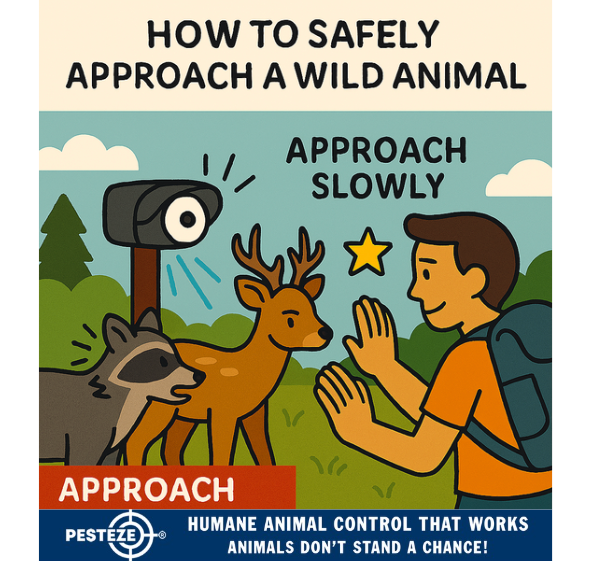HOW TO SAFELY APPROACH A WILD ANIMAL

HOW TO SAFELY APPROACH A WILD ANIMAL
SUMMARY
Approaching a wild animal is rarely recommended, but in rare cases—such as rescue situations or wildlife observation—it may be necessary. Doing so safely requires knowledge, patience, and respect for the animal’s boundaries. This guide outlines how to approach wild animals without causing stress, injury, or conflict. Whether you're a wildlife photographer, a concerned citizen, or a nature enthusiast, these tips will help you interact responsibly and ethically with animals in their natural habitat.
FEATURES
-
Understand Animal Behavior: Learn species-specific signs of stress, aggression, and curiosity.
-
Approach Slowly and Quietly: Reduce threat perception by minimizing movement and noise.
-
Avoid Direct Eye Contact: Prevent intimidation by keeping your gaze soft and indirect.
-
Use Protective Gear: Wear gloves, long sleeves, and carry deterrents for safety.
-
Know When to Stop: Recognize warning signals and retreat before escalating the situation.
-
Follow Legal and Ethical Guidelines: Respect wildlife laws and avoid disturbing protected species.
GUIDE DESCRIPTION
Approaching a wild animal should always be done with caution and only when absolutely necessary. Whether you're trying to help an injured creature or observe wildlife up close, your actions must prioritize safety—for both you and the animal. This guide provides a step-by-step approach to ensure humane and responsible interaction.
Start by identifying the species and understanding its typical behavior. Some animals, like deer or birds, may tolerate human presence briefly, while others—such as foxes, raccoons, or predators—are more likely to react defensively. Look for signs of stress like raised fur, vocalizations, or retreating movements.
If you must approach, do so slowly and quietly. Sudden movements or loud sounds can startle the animal and provoke flight or aggression. Keep your body low and non-threatening, and avoid direct eye contact, which can be perceived as a challenge.
Protect yourself by wearing gloves, long sleeves, and sturdy footwear. Carry deterrents like bear spray or noise makers if you're in areas with larger wildlife. Never attempt to touch or feed the animal unless instructed by a wildlife professional.
Know when to stop. If the animal shows signs of fear or aggression—such as growling, hissing, or backing away—retreat calmly and give it space. Your safety and the animal’s well-being depend on recognizing boundaries.
Always follow local wildlife laws. Many species are protected, and disturbing them can result in fines or ecological harm. If the animal appears injured or orphaned, contact a licensed rehabilitator instead of intervening directly.
By approaching wild animals with care, knowledge, and respect, you contribute to safer human-wildlife interactions and promote ethical stewardship of nature.
- Amy Chang


Comments 0